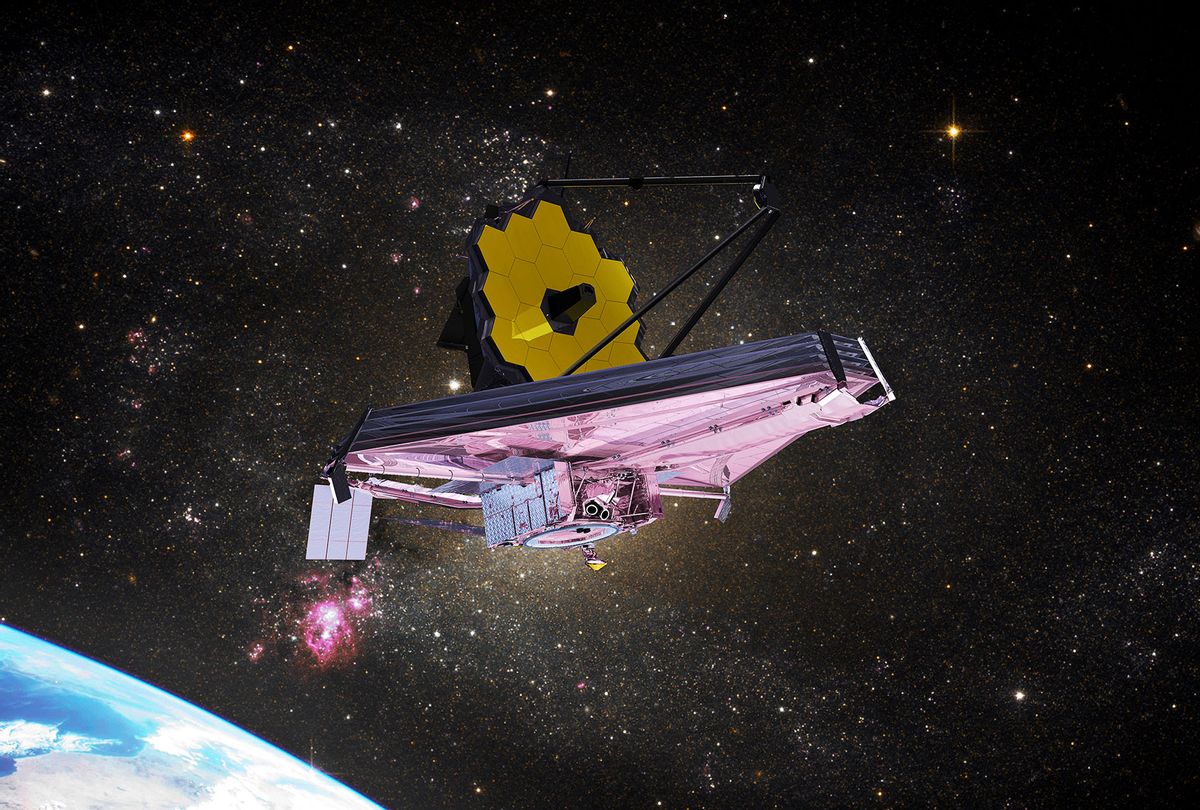At this very moment, the long-anticipated James Webb Telescope (JWST) is situated a million miles from Earth, preparing its mirrors and instrumentation for this summer when its observations will finally begin. When it does kick off observation, scientists say that the uniquely powerful space telescope will have an unparalleled ability to observe distant solar systems and their exoplanets — probing their atmospheres for likely signs of life, such as water, oxygen or methane.
Now, some scientists are considering the proposition that JWST could be tuned to observe something like atmospheric pollution in an alien civilization's sky. Indeed, given that certain pollutant molecules have no known natural origins, the notion of using the telescope to search for such "technosignatures" — as opposed to biosignatures — is intriguing.
Astrobiologist Jacob Haqq Misra's curiosity over whether JWST could probe for alien industries turned into a paper he recently co-authored, which will be published in the Planetary Science Journal in the next few months (currently a preprint is available in preprint on ArXiv). The paper explores the possibility of using JWST to search for industrial pollutants in the atmospheres of exoplanets. Specifically, the paper focuses on chlorofluorocarbons (CFCs), refrigerant compounds which were banned after they ravaged Earth's protective ozone layer.
"Atmospheric pollution is one unique hallmark of industry that does not occur from other forms of biology on Earth, so finding such pollution in an exoplanet atmosphere would be compelling evidence that the planet has technology," Misra told Salon via email. "CFCs are a particularly compelling technosignature because they are known to be technological, they are potent greenhouse gases and they can have a long atmospheric lifetime."
RELATED: Somewhere on Earth, an ozone-destroying supervillain is hard at work
Misra said he and his colleagues not only wanted to determine the extent to which they could search for CFCs in nearby planetary systems with current and near-future technology— like JWST— but they also wanted to encourage " broader thinking" about searching for intelligent extraterrestrial life on other planets.
Misra and his co-authors concluded that JSWT could identify CFCs, but there are some limitations. For example, if a planet's host star is too bright, JWST wouldn't be able to identify CFC signals. The authors concluded that JWST would have the most success looking at small red dwarf stars like TRAPPIST-1, which is 40 light years away. The TRAPPIST-1 system is notable for having at least three planets in the star's habitable zone, which is where liquid water (and therefore life) can exist.
"Searching TRAPPIST-1e for CFCs with JWST would require significant observing time, but this might be comparable to the time that would be required to search for biosignatures like oxygen," Misra said. "Such a long observing program could search for both biosignatures and technosignatures simultaneously."
Misra emphasized that the TRAPPIST star system is "probably one of the best planetary systems to study so far, so there would be a lot of knowledge to gain from such a search even if TRAPPIST-1e turns out not to host life or technology."
In the future, aside from JWST, should human telescopes search for pollutants as a sign of intelligent life? Misra believes there is a compelling reason to do so.
"If we saw pollution in the atmosphere of an exoplanet, such as CFCs, this would be compelling evidence for extraterrestrial technology," Misra said. "Many of these searches can be done at the same time as searches for biosignatures, so it is worth keeping the possibility of technosignatures in mind as we attempt to understand exoplanet atmospheres."
Misra isn't the only scientist thinking that pollutants could be a marker for intelligent life in the universe. Avi Loeb, the former chair of the astronomy department at Harvard University, co-authored a paper published in 2014 exploring the idea as well.
"That was the first detailed study demonstrating the idea that JWST could detect industrial pollution in planetary atmospheres," Loeb told Salon. "In the original paper we considered a habitable planet around a white dwarf; the new paper considers habitable planets around an M-dwarf which are supposed to be more challenging targets."
Want more health and science stories in your inbox? Subscribe to Salon's weekly newsletter The Vulgar Scientist.
There are some reservations about what kind of intelligent life would intentionally pollute their planet, Misra said.
"It is also worth noting that any extraterrestrial technology that we observe will probably need to have been around for a long time in order for us to observe it, [and] this means that a polluted exoplanet atmosphere would probably have to be in a continual state of pollution for us to see it," Misra said. "We will hopefully avoid such a future on Earth, and so it is worth asking whether or not advanced extraterrestrial life would intentionally pollute their atmosphere."
Misra said the question is "worth thinking about," and could perhaps motivate scientists to think more deeply about different types of technosignatures.
"One idea is that CFCs could be useful in terraforming a planet to make it warmer — this idea has been suggested as a way for humans to terraform Mars," Misra said. "Another idea could be that an exoplanet is used entirely for industry or waste, so that the accumulation of CFCs does not pose a hazard to anyone."
But the most far-out idea?
"An even more imaginative possibility is a planet populated by 'post-biological life' that would be impervious to any of the harmful effects of CFCs," Misra said.
More stories on astronomy:



Shares